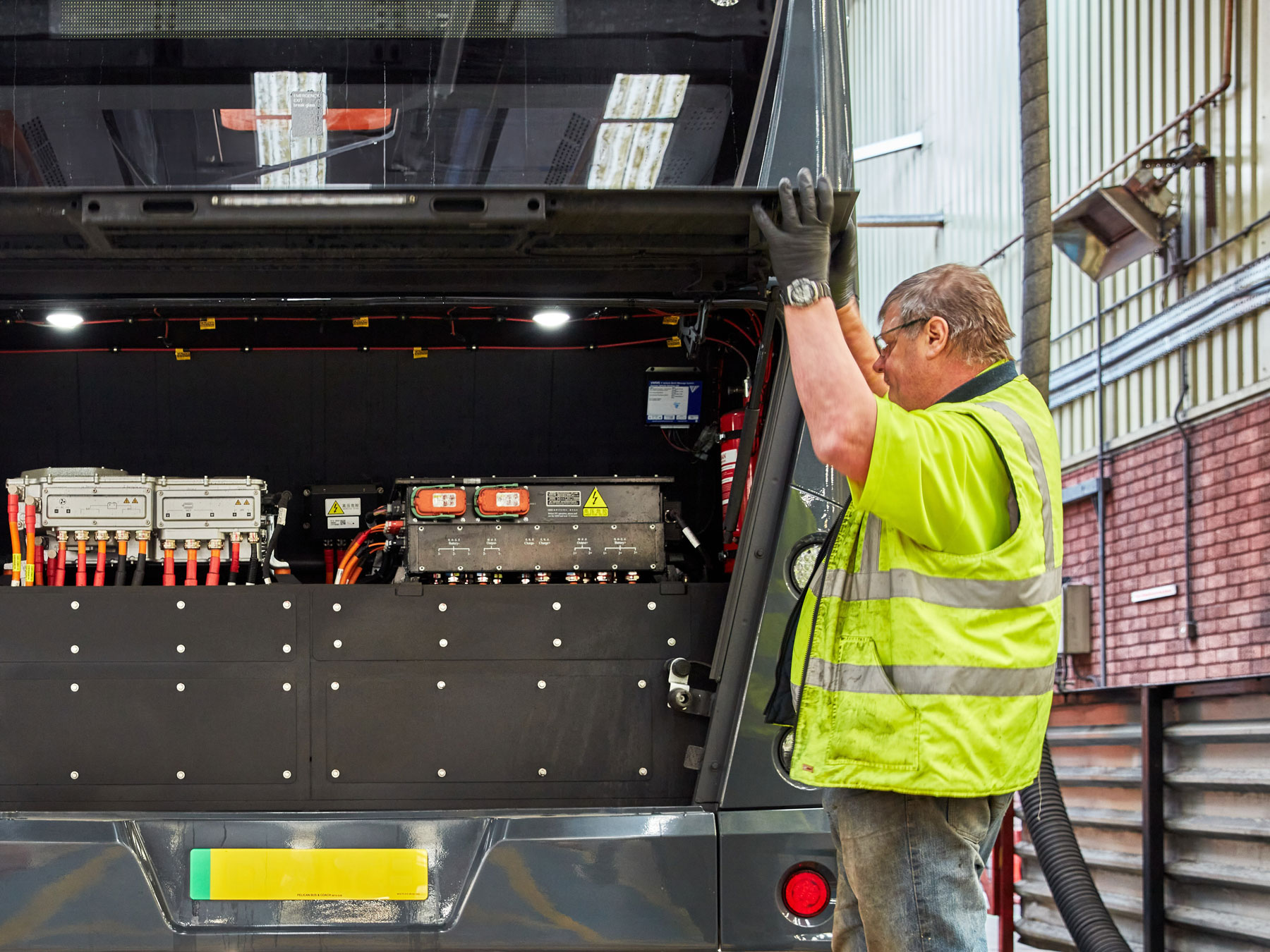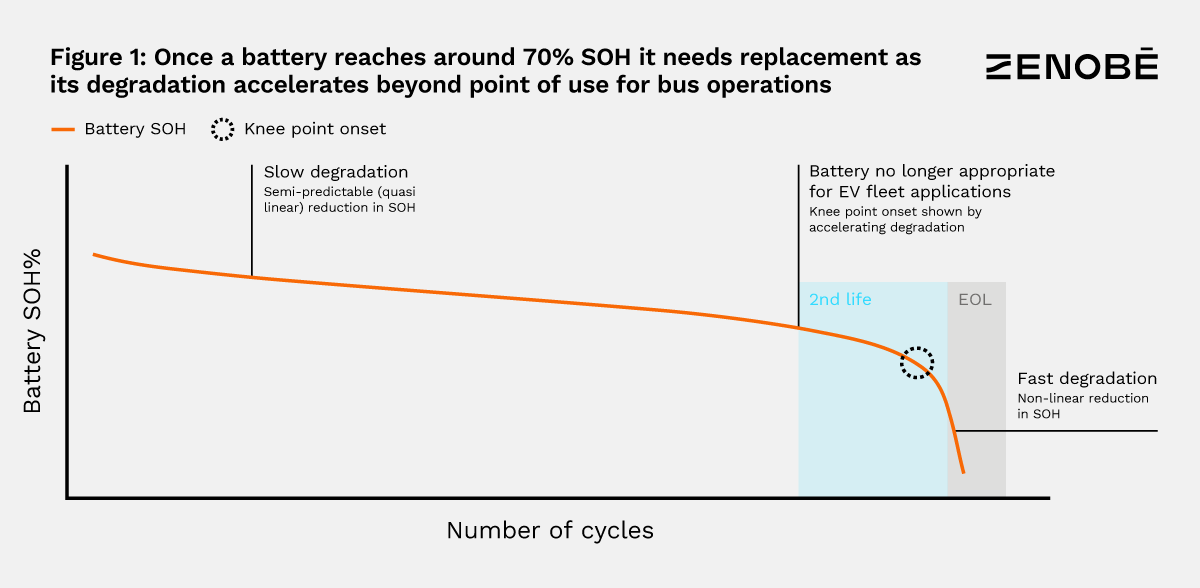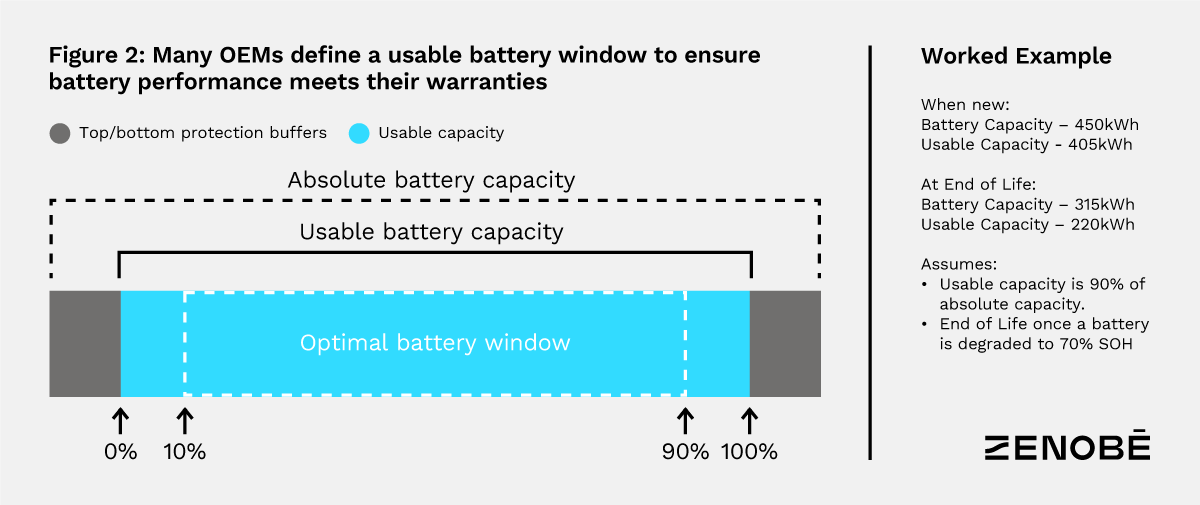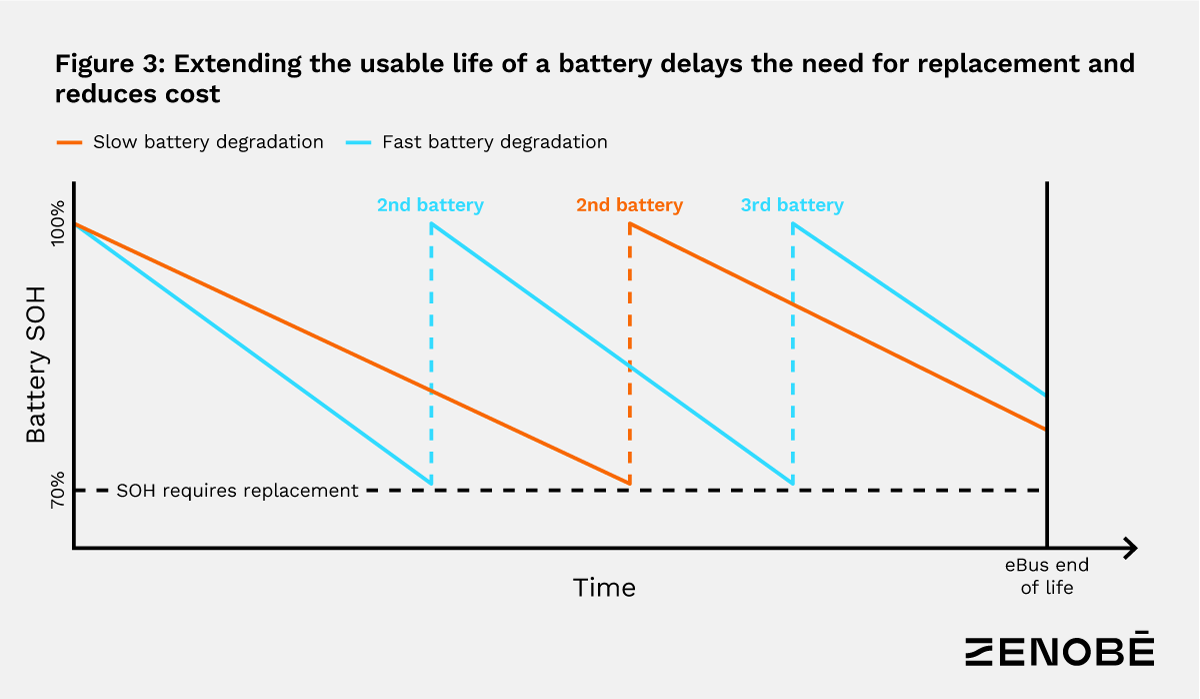Electric bus battery degradation - what causes battery degradation and how to manage it

Battery degradation is where a battery’s energy storage capacity depletes over time, to a point where it is unable to provide enough power to meet the operational requirements it was designed to deliver. In the EV fleet world, this means the battery is no longer able to deliver the mileage requirements of the electric fleet operator.
The need to replace such a high-cost component of a bus is a risk not usually faced by diesel fleet operators, but it is a near certain eventuality for those operating electric. By acknowledging and managing this risk upfront, electric fleet operators can avoid adverse impacts on both their operations, and their finances.
In this article we will provide an understanding of battery degradation, the factors that affect it, how to minimise it, and its implications on the total cost of ownership (TCO) of your electric vehicle.
What is battery degradation?
The constant charging and discharging of a battery initiates a chemical process that causes physical changes to the battery. Charging and discharging and the use of the battery over time, will reduce the total amount of energy that the battery can store, this is known as degradation. Different battery chemistries offer varying features, including differing rates of degradation.
The most common measure of battery degradation is state of health (SOH) – the amount of energy it can now store compared to its capacity when new.
In the bus sector, it is generally agreed that a battery below 70% SOH needs to be replaced. This means (based on expected degradation rates) that the battery will need to be replaced at least once in a vehicle’s life.
Reaching the 'knee-point' and the acceleration of degradation
Before we delve deeper, it is worth noting that electric buses have been on the roads for a relatively short time. This limits the available data on battery degradation so we have used examples from tests in a controlled setting and our own internal analysis from the fleet we currently support.
Sometime after degrading past 70% SOH, battery replacement is usually required as the rate of degradation begins to accelerate. Eventually reaching the ‘knee point’ where we see a marked change in the degradation rate – as highlighted in the chart below – the vehicle range will rapidly reduce to the point that it’s no longer usable for its initial purpose. Ultimately a vehicle battery will be replaced before this point.

How can the rate of battery degradation be managed?
There are two drivers of battery degradation: calendar ageing, and battery usage. The passage of time cannot be managed, so operators need to focus on how the battery is used to minimise degradation. The key factors that affect degradation are:
- Energy throughput of the battery
- Depth of charge and discharge – the operating range of the battery
- Rate of charge – relating to the power of the charge
- Temperature of the battery
By monitoring these factors, fleet operators can implement strategies to maximise the useful life of the on-board batteries and extend the horizon for their replacement. We focus on three specific areas in this article:
- Route allocation
- Depth of charge and discharge
- Minimise throughput
Route allocation
By running vehicles across different routes of varying lengths and topographies, operators can ensure that vehicle batteries degrade evenly across the entire fleet.
Our in-house modelling has looked at the impact of repeatedly running the same vehicles on the same routes each day versus varying them to ensure that they all complete a similar number of miles. This modelling work has shown operators how they can delay replacement of the first battery in a fleet of 50 double-deck buses by up to three years.
High-powered charging is another factor that can increase the degradation of a battery. However, many operators do not have influence over this due to operational route requirements, limited charging windows and restricted grid capacity. Route allocation is a key tool for ensuring that individual vehicles are not repeatedly charged at an ultra-fast rate and can provide the highest likelihood of requiring a just a single battery replacement during the vehicle’s useful life.
Depth of discharge
Operating a vehicle outside of its nominal voltage range – the target voltage the battery should be used at – will increase the degradation of the battery. The nominal voltage range of a battery can simply be thought of in terms of the battery’s SOC, with batteries degrading the least when operated between 10-90% SOC.
Many OEMs place limits on the available battery capacity under its warranty terms to help operators remain in this range – as shown by the graph below. In practice, this means that operators cannot access the full capacity of their battery, only the useable capacity.
Operators can also influence the depth of discharge of their battery by selecting vehicles based on route requirements. This ensures that even once the battery has degraded, it will not need to be discharged beyond 10% to run the route. What’s more, batteries are most efficient when used between 10-90% SOC, meaning that energy losses and energy bills should be lower.
In some cases, a 90% charged battery is sufficient to easily complete a route. At the moment, many operators want to charge to 100% to overcome range anxiety and minimise any operational risk. On top of that, most batteries still need to be charged to 100% to ensure that cells are balanced and maintain their performance.
However, as operators become more comfortable with electric vehicles and as battery management systems are updated, we expect smart strategies to charge vehicles to less than 100% to be implemented.

Minimise throughput
Electric vehicle drivers can both positively and negatively influence degradation of the battery. Harsh acceleration and braking reduce the vehicle’s efficiency, increasing energy throughput in the battery and so degradation.
Performance data, provided by software is a key tool for managing this. Zenobē’s software, Hekaton, has shown that with driver training and performance tracking can achieve up to a 20% improvement in vehicle efficiency through better driving styles. Over a year, this can reduce throughput and depth of discharge to slow down degradation and save on energy costs.
Extend the life of a battery to minimise the number of replacement batteries
Current battery warranties stand at around eight years, and so there is an expectation that two battery replacements may be required over the vehicle’s lifetime.
Operators that manage degradation and slow it down, can minimise the number of battery replacements, potentially halving the capital outlay, as shown below.

Increasing the residual value for a healthier TCO
The TCO for an electric bus can also be influenced by the residual value assigned to batteries when they are removed and replaced.
Each electric bus battery is made up of packs, with each pack made up of several modules. Based on extensive conversations with the battery recycling industry, we estimate that 70-80% of modules will have adequate SOH for new, less intensive applications, or as we call it at Zenobē, a second life.
As a specialist lessor, Zenobē, takes ownership of battery risk from the operator through a battery-as-a-service model or ‘battery managed service’. Paid as a fixed monthly rental over the life of the electric bus, this service removes the risk of replacement and exposure to battery markets. We recently worked with Nottingham City Transport to finance 24 batteries on board their new fleet of electric vehicles, including a 16-year performance guarantee of the batteries.
Moreover, with a second life residual value, this fee can be reduced. With data to understand how the battery has been used, Zenobē can forecast how it will perform in second-life applications, boosting their value and further reducing fees for operators.
The key takeaways
Understanding battery degradation allows operators to:
- Minimise the need for battery replacements and reduce the associated costs
- Increase the residual value of the end-of-life batteries, thus decreasing the first-life cost
As specialist lessors like Zenobē continue to develop new strategies to minimise degradation, operators will over time avoid costly, and potentially unnecessary, battery replacements in the future.
